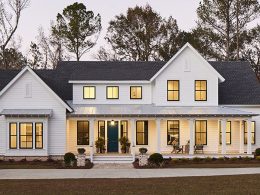Introduction: Exploring the Concept of Townhouses
In the realm of residential architecture, townhouses stand out as a unique and popular housing option. Defined by their distinctive design and characteristics, townhouses offer a blend of convenience, community, and individuality. Whether you’re considering purchasing a townhouse or simply intrigued by their concept, this article aims to provide you with a comprehensive understanding of what a townhouse is and what sets it apart from other types of homes.

Distinctive Characteristics of Townhouses
A townhouse, often referred to as a townhome, is a type of residential property that shares one or more walls with neighboring units. Townhouses are typically multi-story structures, and each unit is individually owned. They are characterized by their vertical orientation, with multiple levels stacked on top of one another. Unlike apartments or condominiums, townhouses offer a combination of private living space and shared exterior walls.
Townhouse vs. Other Types of Homes: Key Differences
While townhouses share some similarities with other types of homes, such as condominiums and single-family houses, there are key differences that set them apart:
- Ownership: Townhouses are individually owned units within a larger complex. Condominiums involve ownership of a single unit and shared ownership of common areas, while single-family houses stand alone and are owned by a single entity.
- Structure: Townhouses share walls with neighboring units on one or both sides, offering a balance of privacy and proximity. Single-family houses are standalone structures, and condominiums often involve units stacked on top of each other.
- Maintenance: Townhouse owners are responsible for maintaining their interior and limited exterior areas, while shared common areas and building exteriors are managed collectively. Condominium associations typically handle exterior maintenance and shared amenities, and single-family homeowners are responsible for all maintenance.
- Amenities: Condominiums and townhouses may offer shared amenities such as pools, gyms, or community spaces, whereas single-family houses have individual yards and potential for personalized amenities.
Advantages of Townhouse Living
Townhouses offer several advantages that appeal to a variety of homeowners:
- Affordability: Townhouses often come at a lower price point compared to single-family houses, making homeownership more accessible.
- Community: Townhouse communities foster a sense of community and often provide shared amenities that encourage social interaction.
- Low Maintenance: Exterior maintenance is typically managed by a homeowners’ association (HOA), reducing the burden of upkeep for individual owners.
- Location: Townhouses are often located in urban or suburban areas, offering convenient access to amenities, entertainment, and workplaces.
Considerations Before Buying a Townhouse
Before purchasing a townhouse, there are several factors to consider:
- HOA: Understand the rules and fees associated with the homeowners’ association, as they govern the community’s rules and maintenance.
- Shared Walls: Consider your comfort level with sharing walls and proximity to neighbors.
- Space: Evaluate the floor plan and square footage to ensure it meets your needs.
- Resale Value: Research the townhouse market in your area and assess the potential for appreciation.
Conclusion: Embracing the Appeal of Townhouse Living
Townhouses represent a unique and appealing housing option that combines elements of privacy, community, and convenience. Their distinctive design, shared walls, and vertical orientation make them a popular choice for individuals and families seeking an alternative to traditional single-family homes or apartments. Whether you’re drawn to the sense of community, the manageable maintenance, or the affordability, townhouses offer a distinct living experience that continues to capture the interest of homebuyers in various regions.












